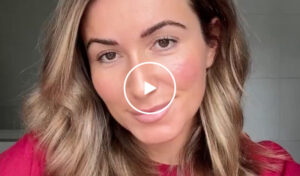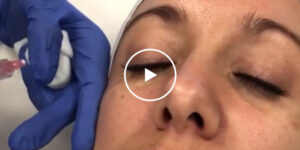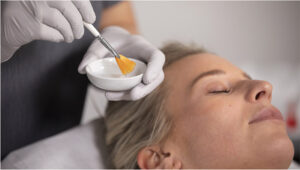What to consider when choosing a clinic or practitioner for Botox injections
The use of Botox for the treatment of wrinkles has grown rapidly in recent years to become one of the most popular non-surgical cosmetic procedures. Botox is now offered in many places, from aesthetic clinics to medi-spas and to nail salons and hairdressers; with so much choice at varying price points and so many promises of younger-looking skin, it can be daunting when you try to decide to whom you should entrust your skin.
The Internet is littered with reviews and advice on varying scales so, to help you know what to look out for, I’ve detailed my advice on how to ensure you select a professional practitioner.
It’s vital that you pick the right place to get the best results and ensure your safety; it’s not a good idea to just pop to your local beautician on a whim without doing the proper research. The tell-tale signs of bad Botox are obvious: glass-smooth forehead, a surprised expression or the inability to show any emotion. A less is more approach, which leaves the face looking relaxed but mobile, is far more desirable and is a policy which any good practitioner should advocate.
Choosing a Botox clinic for the first time can be difficult and shouldn’t be a quick decision. There are a few simple things that you can look out for to make the process easier and to ensure you feel confident with your choice, ensuring you not only look great but also enjoy the experience. Despite scare stories, Botox is safe and is more thoroughly tested and regulated than most other wrinkle-filling substances. What is less regulated are the legions of people who inject it and you need to be able to recognise any potential ‘cowboys’ from qualified, experienced aesthetic experts who practice the art of Botox.
Injecting Botox is a skilled procedure and should be administered by a qualified and trained practitioner, preferably a doctor. Check that the practitioner has registration with the General Medical Council (GMC). The GMC have an online registration checking service. Check that the Clinic and Doctor have the appropriate insurance cover, also known as medical indemnity -this is to protect you if something goes wrong.
Exercise caution when it comes to non-mainstream premises – hairdressers, department stores, nail salons et al who are now offering Botox. Cosmetic injections should only be carried out by an appropriately trained nurse or doctor; not by beauty therapists who lack the necessary clinical background. Many are qualified and equipped with suitable standards but unfortunately a small number are not ideal environments. A reputable, well-established and recommended clinic is by far the better and safer option.
Look for signs of success, awards, accolades, client reviews. Always ask if a consultation prior to your treatment is an option. This is good practice and allows you to check the premises and staff to make sure you feel comfortable. This is also good opportunity to ask the doctor any questions you may have. Ensure the clinic has a follow-up service. Botox can take up to two weeks to settle. It should be standard practice for anyone to have a review two weeks after treatment to ensure that the result is the one you were looking for. Don’t make your decision based on price alone. Sometimes the deals you see on the high street really are too good to be true, with diluted substances, unqualified practitioners; low cost options can be dangerous.
Your checklist:
- Qualifications: Check the qualifications of the practitioner: only regulated doctors, dentists and registered nurses are qualified to give injectable cosmetic treatment.
- Title: Don’t be taken in by unusual or unrecognisable titles such as “Advanced Aesthetic Practitioner/Therapist”. When you check qualifications, make sure that the title of doctor, dentist or registered nurse actually applies to the person who is holding the syringe.
- Training: Practitioners need training in a variety of areas in order to give injectable cosmetic treatments. These include how to deal with severe allergic reaction (anaphylaxis) and other adverse reactions to treatment.
- Location: Treatments such as Botox and dermal fillers should only be carried out in a clean, safe and appropriate clinical environment to avoid infection and even permanent physical damage. Treatments should not be carried out in a non-clinical facility.
What you need to know
- Botox is the registered trade name of the potent neurotoxin Botulinum toxin A.
- Botulinum toxin A has been safely used for 30 years as a treatment for spasms in eye muscles as well as many other medical conditions
- Injecting Botox into a muscle weakens its ability to contract
- It can soften wrinkles caused by the contraction of facial muscles.
- Injections take a few minutes; the effects are visible 4-8 days and last for 3-6 months.
- The most popular areas are between the eyebrows, across the forehead, and around the eyes to eliminate “crow’s feet”.
If you have any questions, don’t hesitate to talk to us or another reputable practitioner so you can make an informed decision about your skin.






